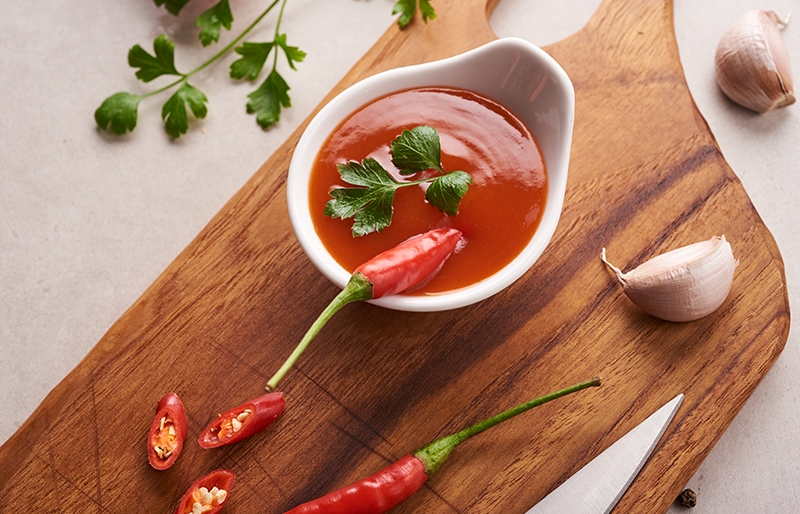Many people today are more conscious about their health than ever before. A staggering statistic suggests that more than 33 percent of the adult population in the United States suffers from obesity. It often times is a direct consequence of poor nutritional choices and lack of exercise. Unfortunately, obesity increases the risk for diseases like diabetes and high blood pressure. Statistics like the previously mentioned example are among the many reasons for a person to engage in ways to pay extra attention to their whole health.
A dedicated individual can implement several strategies when trying to shed weight. One of the ideal ways of losing weight is through modifying their diet – in particular, making good whole food nutritional choices.
Proper nutrition is an integral part of weight loss. There are several types of diets that can be adopted to get started on the path to achieving wellness and staying healthy.
One of the primary concerns is the types of food and condiments appropriate for a weight loss strategy.
So, is hot sauce good for weight loss?
Hot sauce can assist you in losing weight. The condiment contains a substance known as capsaicin. When consumed, with the right food choices, it increases the body’s metabolic rate. This means that your body will metabolize fats faster, resulting in weight loss.
Table of Contents
Best Diets For Weight Loss
Proper nutrition is essential for weight loss, but which diet can you follow as a guideline? Several variations are ideal for you when you start the journey to a healthier lifestyle.
The most common diets for weight loss are:
1. Low-fat diet
A leading cause of weight gain is the consumption of unsaturated fats and oils. A low-fat diet reduces the consumption and uptake of fats for a healthier lifestyle. Reducing the intake of fats will help in weight loss.
What is a low-fat diet? A low-fat diet contains fruits and vegetables, legume based foods, and sweet potatoes.
Mushrooms and garlic are also healthy low-fat options. For protein, consume white meat or fish instead of lot of red meats. Grains are also reasonably low in fat.
These foods are rich in iron, vitamin, and fiber. They contain virtually no fat, making them an excellent healthy option.
2. Low-calorie diet
Monitoring the intake of calories goes a long way in losing weight or minimizing weight gain. When following a low-calorie diet, the intention is to eat below 800 calories in 24 hours.
Note that a low-calorie diet needs to be medically supervised. Therefore, consult your doctor or provider before starting.
Examples of foods under a low-cal diet are oats and legume-based food such as beans, berries, and eggs. Others include popcorn and chia seeds. For protein, fish and lean meat are ideal.
Additionally, note that a low-calorie diet could have mild to severe side effects at the onset of the dieting process. Common side effects are fatigue, hunger, dizziness, diarrhea, and constipation. It is advised to avoid any low-carb diet if you are pregnant or breastfeeding.
3. Ketogenic diet
A ketogenic diet takes a different approach to weight loss. It helps with weight loss by putting the body through a state known as ketosis.
What is ketosis? It is when the body metabolizes proteins and fat for energy instead of carbohydrates.
The process starts when ketones go into the muscles in ketogenesis. By using fat for weight loss, you lose weight and become leaner.
There are three categories under Ketogenic diets. These are the standard ketogenic diet (SKD), the cyclical ketogenic diet (CKD), and the protein-rich ketogenic diet.
- The SKD has the proportion of fat to proteins and carbs in the ratio of 7:2:1.
- The CKD is similar to the standard ketogenic diet. The exception is having two days of the week for high carbohydrate intake.
- The protein-rich ketogenic diet has a composition of fat to carbohydrates to proteins in the ratio of 12:7:1.
When on a ketogenic diet, avoid alcohol, fruits, and any form of candy, as it will disrupt the ketosis process.
4. Atkins diet
The Atkins diet is a unique plan that induces weight loss by minimizing carbohydrate intake. The diet is named after its creator, Dr. Robert Atkins.
It has some similarities to a ketogenic diet in that it favors a high fat intake and low carbohydrate intake. There are some key differences. Atkins diet has the following steps:
Stage 1 involves reducing your carb intake to 25 grams per day for 14 days. It would help if you ate high amounts of saturated fats and protein during this period.
Stage 2: Increase the intake of proteins after 14 days. You can add small amounts of carbohydrate-based vegetables to the stage.
Stage 3: Slow the weight loss process. Add carbohydrates only to the point where you are no longer losing weight.
Stage 4: Fully integrate carbohydrates back into your diet.
After stage 4, you will notice that you don’t gain weight with increased carbohydrate intake.
You should avoid sugar, grains, saturated fat, starch, and legumes when on the Atkins diet.
5. The WHO recommended healthy diet
The World Health Organization (WHO) has put forth a diet that can be helpful in weight loss. A healthy diet consists of:
- Fruits, vegetables, unprocessed whole grains. The guidelines recommend that your vegetable consumption be at least 400 grams each day.
- No more than 50 grams of sugar for every 2000 calories consumed.
- Unsaturated fats are preferable and should account for under 30% of energy intake.
- No more than 5 grams of salt each day.
Metabolism and Weight Loss
Metabolism is the general term used to reference all the chemical processes in living organisms.
There are many metabolic processes in both simple and complex organisms. Metabolism is key to active weight loss.
Several factors determine the metabolic rate, ranging from age and dieting to exercise.
How is metabolism linked to weight loss? Metabolism determines the rate at which our bodies oxidize fat and calories to produce energy in the process of respiration.
A high metabolic rate indicates that calories are utilized faster to make energy—the faster the utilization, the lesser the accumulated fat. Research has shown that low metabolic rate catalysts for rapid weight gain.
Health Advantages of Losing Weight
Here are some advantages of losing weight:
Reduced blood pressure
Losing weight contribute to lowering the blood pressure. It can also lead to a reduced risk of suffering from hypertension.
Lower diabetes risk
Weight loss causes a reduction in the risk factors associated with diabetes. It helps to live a healthier lifestyle.
Better cardiovascular health
Weight loss improves cardiovascular health. It can reduce the risk of getting illnesses such as coronary heart disease.
Improved sex life
Weight loss can help minimize erectile dysfunction. It can also improve your libido.
Self-esteem
Our weight is a part of our general appearance that we can influence. Losing weight can help improve self-esteem and confidence.
Conclusion
It’s a fact that many people in our generation are keen on their health and lifestyle choices. Although challenging, eating healthy and balanced meals is becoming the norm. People are also keen on losing weight and staying fit.
Hot sauce can help in weight loss. However, it helps if you used natural chili, as it is less processed. Furthermore, limiting your exposure to processed and refined foods will inevitably benefit your overall well-being in the long run.
Want to Work Together?
Choosing better dietary choices and eating a diet that supports your wellness goals will help you achieve the health and happiness you desire. However, it’s necessary to continue making optimal healthy decisions if you wish to make a lasting change in your wellness journey. Are you struggling to make good decisions? Are you a tired, overwhelmed, or stressed woman who’s beginning to experience negative health issues such as digestive problems, chronic inflammation, aging prematurely, or weight gain? After consistently putting in long hours and juggling too many priorities, are you desperate to make a change?
It’s easy to neglect personal wellness in exchange for what feels good and that never-ending to-do list. The thought of adding one more thing to your list – wellness – may even tip the scale. Take the guesswork out of the individual steps needed to find balance and optimal health and let the Green Balanced Gal Wellness Program lead the way. You are unique, your food and lifestyle choices should be too, and thankfully, the Green Balanced Gal approach to wellness is not a one-size-fits-all approach. Get started today with the coaching support you need to feel your very best – mind, body, and soul!
I want to guide you through taking back the balance and health in your life. I’d love to jump on a call with you to see how we can work together. Schedule a time here>>



